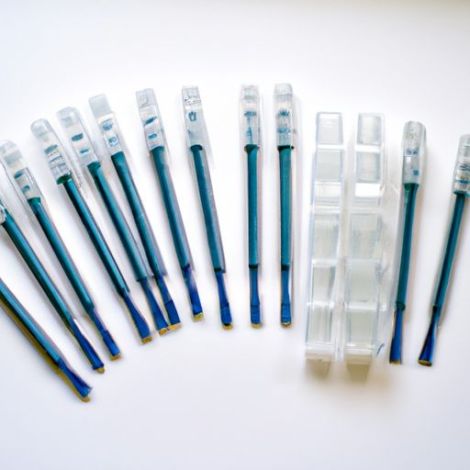Table of Contents
The Importance of Proper Liquid Handling Techniques in the Laboratory
Precision liquid handling is a critical aspect of laboratory work that requires careful attention to detail and accuracy. Whether you are measuring out small volumes of reagents for an experiment or transferring samples for analysis, mastering the art of using micropipettes is essential for achieving reliable and reproducible results. In this comprehensive guide, we will explore the importance of proper liquid handling techniques in the laboratory and provide tips for achieving precision and accuracy in your work.
One of the key reasons why proper liquid handling techniques are so important in the laboratory is that even small errors in volume measurements can have a significant impact on the outcome of an experiment. For example, if you are working with a reagent that is expensive or in limited supply, inaccuracies in volume measurements can Lead to wasted resources and unreliable results. By mastering the use of micropipettes and practicing proper liquid handling techniques, you can ensure that your experiments are conducted with precision and accuracy.
In addition to ensuring the accuracy of your measurements, proper liquid handling techniques are also important for maintaining the integrity of your samples. Contamination can easily occur if proper precautions are not taken when transferring liquids, which can lead to inaccurate results and compromised data. By following best practices for liquid handling, such as using sterile tips and avoiding cross-contamination between samples, you can minimize the risk of errors and ensure the reliability of your experimental results.
When it comes to mastering micropipettes, there are several key factors to consider. First and foremost, it is important to familiarize yourself with the specific micropipette model that you are using and understand how to properly calibrate and adjust it for accurate measurements. Additionally, it is essential to use the correct size of pipette tip for the volume of liquid being transferred, as using the wrong size can lead to inaccuracies in measurements.
Another important aspect of mastering micropipettes is developing good pipetting technique. This includes holding the pipette at the correct angle, dispensing the liquid slowly and steadily, and ensuring that the tip is fully submerged in the liquid to prevent air bubbles from forming. By practicing these techniques and paying attention to detail, you can improve the accuracy and precision of your liquid handling skills.
In addition to proper technique, it is also important to take care of your micropipettes and ensure that they are properly maintained. This includes regularly cleaning and calibrating your Pipettes, as well as storing them in a clean and dry Environment when not in use. By taking these steps, you can prolong the life of your micropipettes and ensure that they continue to provide accurate and reliable measurements.
In conclusion, mastering precision liquid handling techniques is essential for achieving excellence in the laboratory and ensuring the accuracy and reliability of your experimental results. By following best practices for using micropipettes and practicing proper liquid handling techniques, you can minimize errors, reduce contamination, and improve the overall quality of your work. With dedication and attention to detail, you can become a master of precision liquid handling and achieve scientific excellence in your laboratory work.
B. Tips for Maintaining Accuracy and Precision with Micropipettes
Precision liquid handling is a critical aspect of laboratory work that requires careful attention to detail and accuracy. Micropipettes are essential tools for accurately measuring and transferring small volumes of liquid in a laboratory setting. Mastering the use of micropipettes is crucial for ensuring the reliability and reproducibility of experimental results. In this comprehensive guide, we will discuss tips for maintaining accuracy and precision with micropipettes to achieve laboratory excellence and scientific accuracy.
One of the most important factors in achieving accurate and precise liquid handling is proper calibration of micropipettes. It is essential to calibrate micropipettes regularly to ensure that they are dispensing the correct volume of liquid. Calibration should be performed using a calibrated balance or a calibration kit provided by the manufacturer. It is also important to check the calibration of micropipettes after any maintenance or repair work.
Another key factor in achieving accuracy and precision with micropipettes is proper technique. When using a micropipette, it is important to hold it at a 45-degree angle to prevent liquid from running Down the outside of the tip. It is also important to dispense the liquid slowly and steadily to ensure accurate volume delivery. Avoiding air bubbles in the tip is crucial for accurate measurements, as air bubbles can affect the volume of liquid dispensed.
Proper maintenance of micropipettes is essential for ensuring their accuracy and precision. Micropipettes should be cleaned regularly with a mild detergent and water to remove any residue that may affect their performance. It is also important to regularly replace the tips of micropipettes to prevent contamination and ensure accurate measurements. Additionally, storing micropipettes in a clean and dry environment can help prevent damage and maintain their accuracy.

When working with micropipettes, it is important to use the correct technique for loading and dispensing liquid. When loading a micropipette, it is important to immerse the tip of the pipette into the liquid and slowly draw up the desired volume. It is important to avoid touching the sides of the container with the tip of the micropipette to prevent contamination. When dispensing liquid, it is important to press the plunger slowly and steadily to ensure accurate volume delivery.
In conclusion, mastering the use of micropipettes is essential for achieving laboratory excellence and scientific accuracy. By following the tips outlined in this guide, you can maintain accuracy and precision in your liquid handling techniques. Proper calibration, technique, maintenance, and handling are all crucial factors in achieving accurate and reproducible results in the laboratory. By paying attention to these details and practicing good laboratory habits, you can ensure the reliability and validity of your experimental results.
